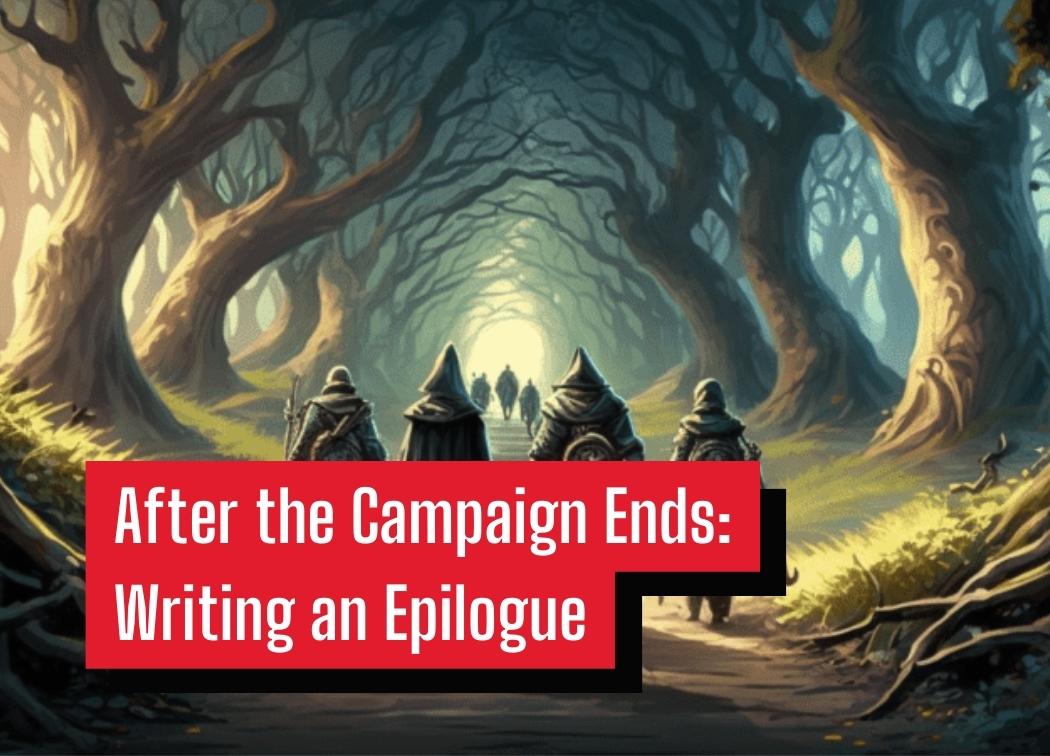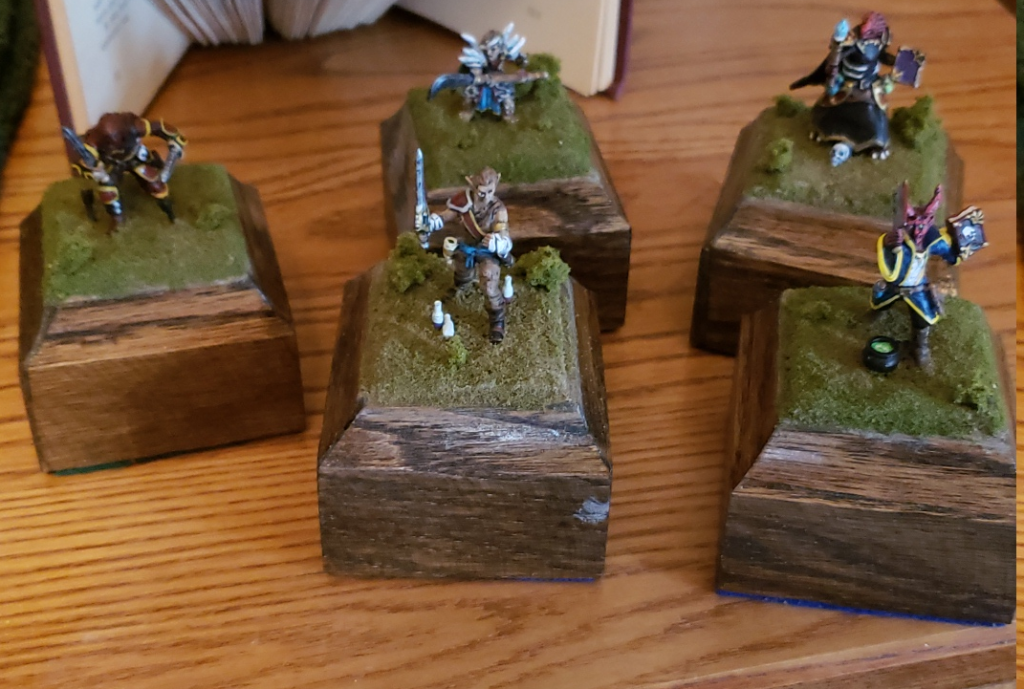After the Campaign Ends: Writing an Epilogue

Some time ago I wrote an article about ending a D&D campaign. I was under the assumption that my campaign was coming to a close at that time, but due to global events and personal conflicts we stretched the campaign out another… 4 months.
Regardless, we’re finally, officially, wrapping this campaign up. In the spirit of wrapping up this 4-year long campaign, I wanted to tie up all the various loose ends as neatly as possible.
One idea I presented in the previous article on ending D&D campaigns was to have everyone do an epilogue. Provided they want to write one for their characters. I’d never done this before for my other campaigns and I wasn’t sure how well it’d go over when I suggested it.
However, the ones that I’ve received so far have been fantastic! I’m very excited for everyone to share what they wrote with each other this coming session.
So today let’s talk about epilogues and how you can use them to give players control over the final chapter of their characters’ stories.

What is an Epilogue?
According to Wikipedia, “An epilogue is a piece of writing at the end of a work of literature, usually used to bring closure to the work”.
Think of it as a story-telling device for tying up loose ends that the book’s ending may have left out. Oftentimes an epilogue is used to inform the reader of what happens to the characters after the events of the story.
This is precisely what I’m using epilogues for in my D&D campaign. Each player has been given the option to write an epilogue for their character. I also have one in mind for their characters should they want me to give them one instead of making their own.
I did not set any form of a timeline or story limitation for these epilogues. They could give everyone a brief look into the remainder of the character’s life or they could even focus on a single important event that defined the remainder of the character’s life.
The players were free to close-out their character’s story out however the wished.
Short Sweet and to the Point
While I didn’t limit anyone in regards to their storytelling ability, I did ask that everyone keep their epilogues down to a few paragraphs. This is primarily so that we can ensure that everyone has time to read their epilogues without rushing through it, but also because concise epilogues are more powerful.
An epilogue’s purpose is to tell the reader what happened to the character after the story. That means there are no character introductions or any sort of build-up required since the reader already knows who they’re reading about.
Give the reader enough information to know what the character accomplished in their life or how a specific event changed their path after the story and then end your epilogue. Describe only as much as you need to and leave the rest up for interpretation.
Showcases Growth
I’ve received two of the four epilogues thus far. Both of these epilogues have one thing in common, they showcase the growth their respective characters had throughout the campaign.
This is what made these epilogues so great to read. Both characters started with a flaw and throughout their journey, they were forced to confront this flaw several times. The epilogue showcased how, because of their growth throughout the journey, the path they traveled for the remainder of their life was altered, generally for the better.
Both epilogues also showed how the character’s growth impacted their friends and communities around them. It was a sort of positive feedback loop that tied-into the events of the campaign while also capping off various NPCs’ stories as well.
Showcasing how your character changed is one of the easiest and most effective ways to write an epilogue.
Give the Player Complete Control
It’s important to give your players total control over their characters’ epilogues. It’s one of two times in the entire campaign that the player will have 100% of the say of what the outcome of the situation is. The first of which was their character’s backstory.
What the backstory and epilogue have in common is that first of all, they do not involve anyone else’s input aside from the campaign’s setting. Secondly, neither of these situations have any dice rolls tied to them. Whatever the player wants to happen happens.
This is an important distinction to make. There is no chance of failure so any failure that a player would include in an epilogue is intentional.
This is a lot of power to give to the players, but it’s also a great and generally well-earned reward for showing up to a 3-4 hour game regularly for years at a time. The character they’ve grown so attached to must get the ending they envisioned.
Keep it Optional
I mentioned before that I’m not requiring epilogues from everyone and that I’ve even got epilogues stowed away just in case someone wants one but doesn’t want to write their own.
Even in literature, an epilogue is a completely optional piece of the story. It’s additional information that, while the reader may appreciate, does not have any bearing on the story’s outcome.
An epilogue in a D&D campaign should be approached with the same mindset. If a player is content with their character wandering off into the sunset then that’s fine.
Some people are more invested in role-playing than others. An epilogue gives those who are invested a chance to tie everything up in a neat little bow.
A DM’s Epilogue
Epilogues don’t have to be just a thing for the players. The DM should be more than welcome to make one of their own!
I wrote an epilogue on the continent that the adventure took place in. This was relevant for my campaign as the overarching plot of the campaign was that the continent has been consumed by war for hundreds of years. Eventually, the party uncovered a cult that was pulling the strings and causing these wars to resurrect the dragon god, Tiamat.
The final chapter of the campaign involved the party storming the cult’s headquarters and dismantling (and dismembering) the cult.
The epilogue that I wrote focused on how the world functioned after the heroes of the story dispersed this shadowy hand that played the various factions against each other for hundreds of years.
The DM’s epilogue should also be short, but rather than focus on specific characters, it should focus on the impact of the party’s accomplishments. What happens after the party saves the day?
Try and think of how the party altered the timeline. Sure, life went back to normal, but did any permanent change happen to prevent this from ever occurring again?
Even though it’s the DM’s epilogue, it should still involve the party. After all, they were the stars of the show.
Conclusions
An epilogue is a fantastic way to tie up the characters’ loose ends in a campaign. It’s also a fantastic vessel for the DM to show how the party’s journey had an impact on the world around them.
They’re also a great tool for showcasing the characters’ growth throughout their journey. Every character in my game went through a fairly impressive transformation between their creation and their final moments. The epilogue is a great way to highlight this change.
Another benefit of doing epilogues is that they are also great tie-ins for future campaigns. I’ve gotten a fair share of ideas from the few I’ve written and the ones that have been submitted to me!
Keep your epilogues short, sweet, and to the point, but have fun with them! Think of how to best cap off your character’s arc as they walk off into the sunset having been a part of something larger than themselves.
